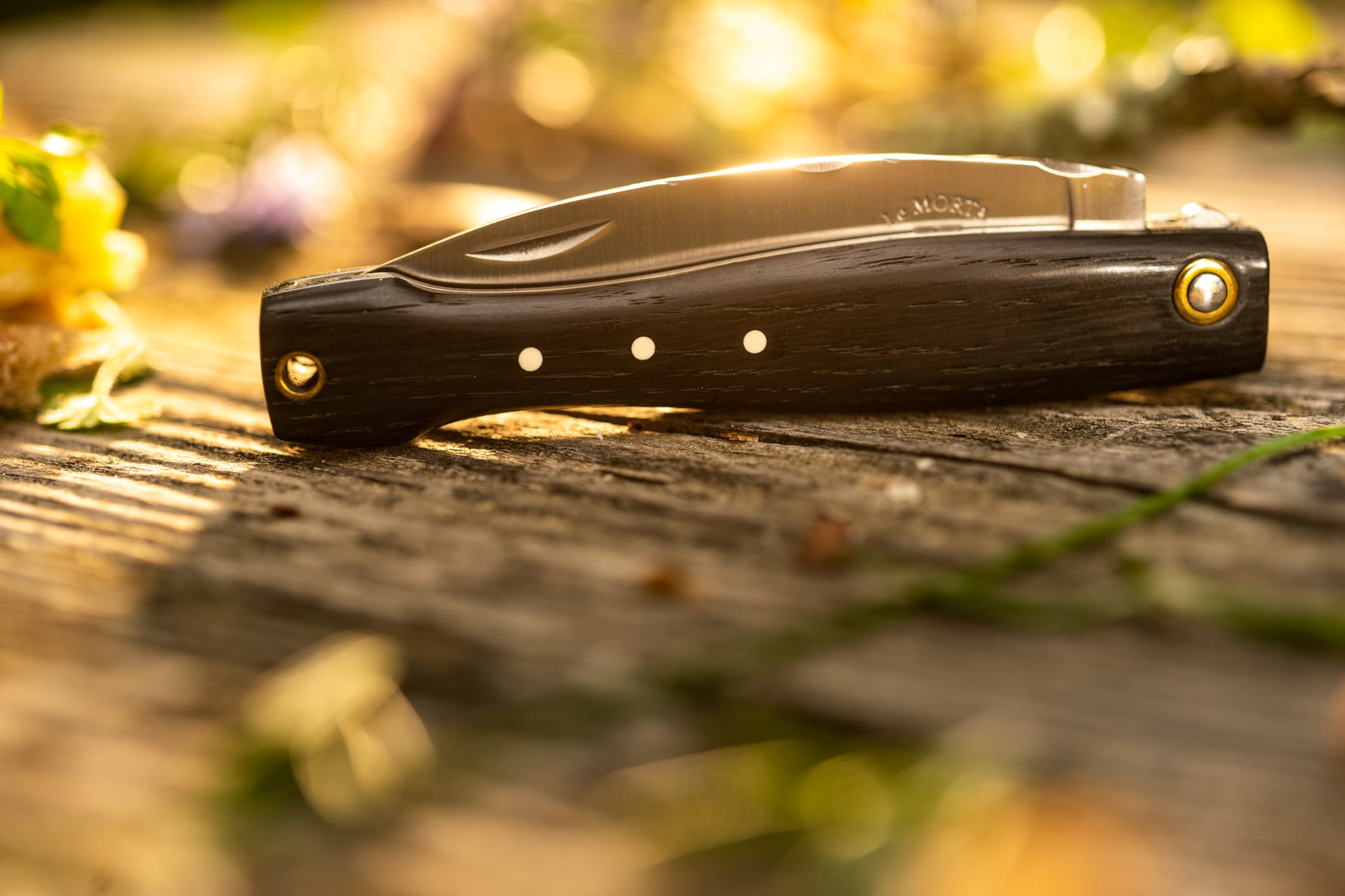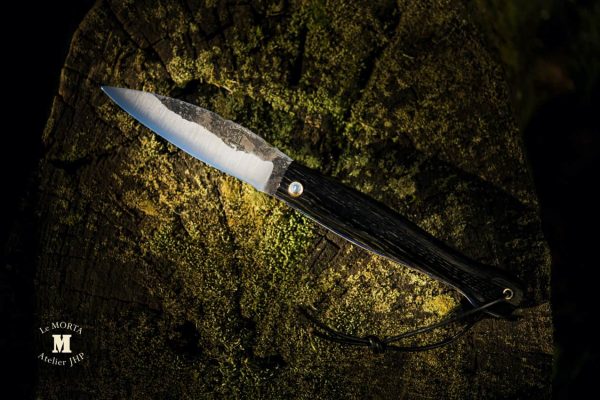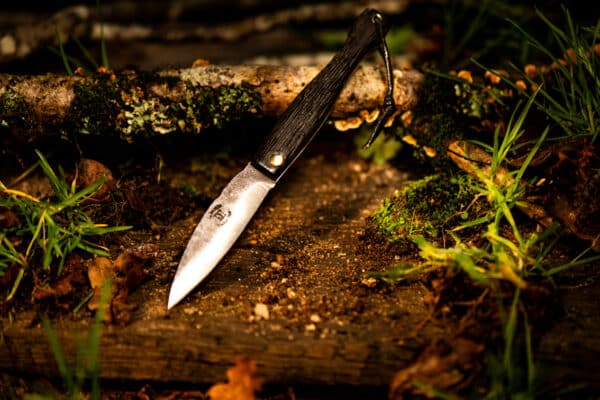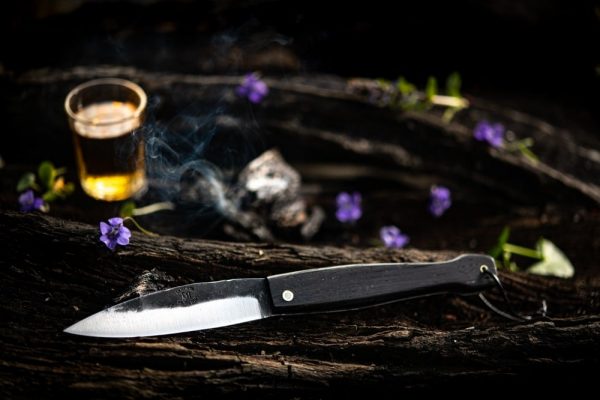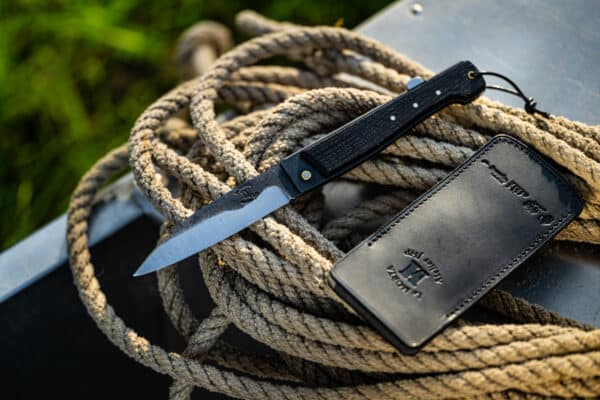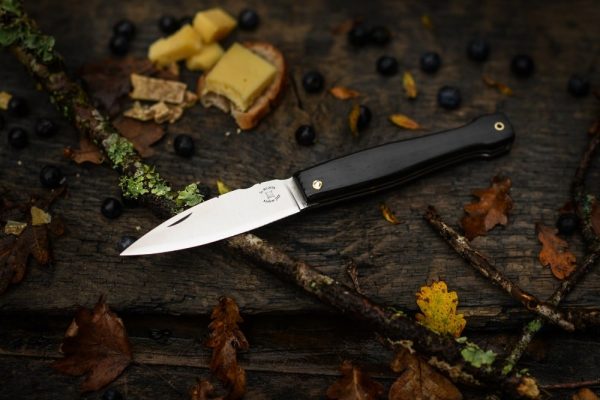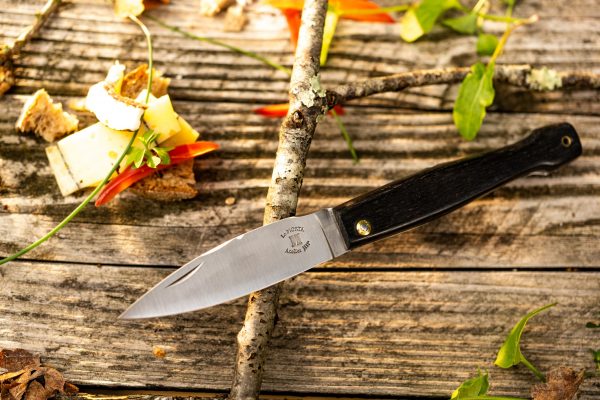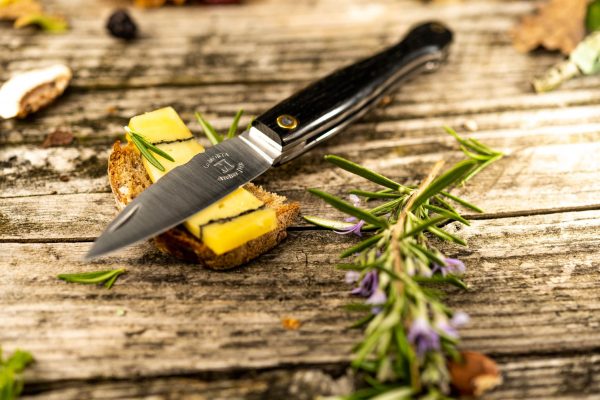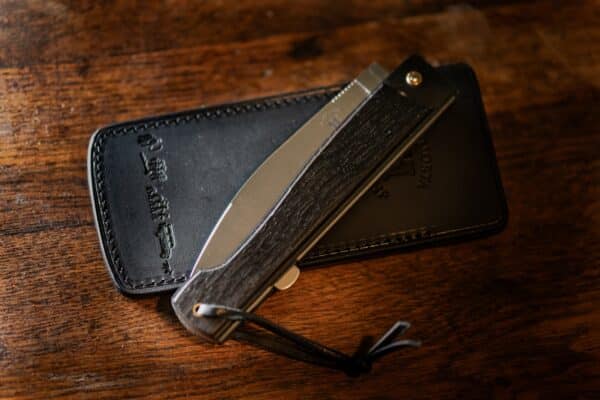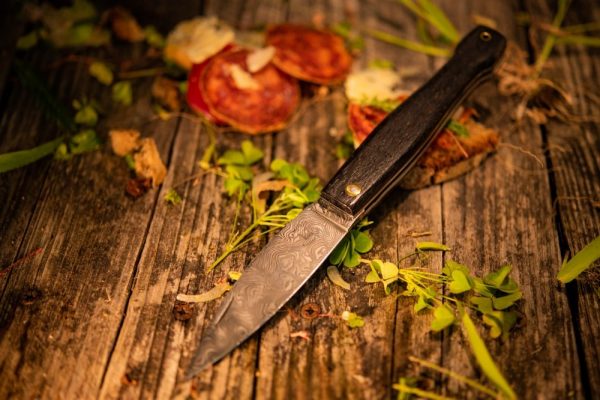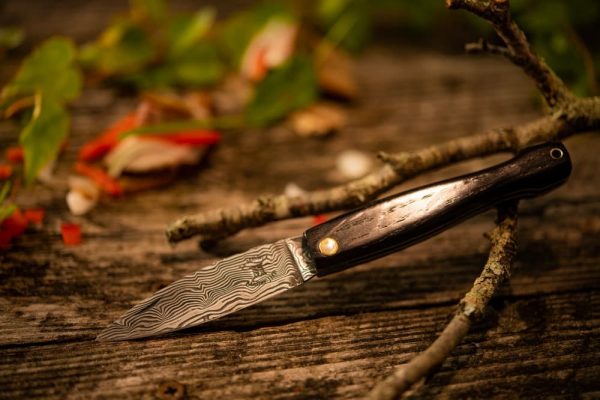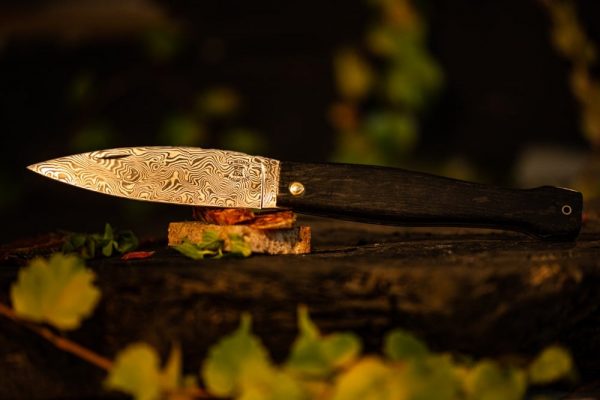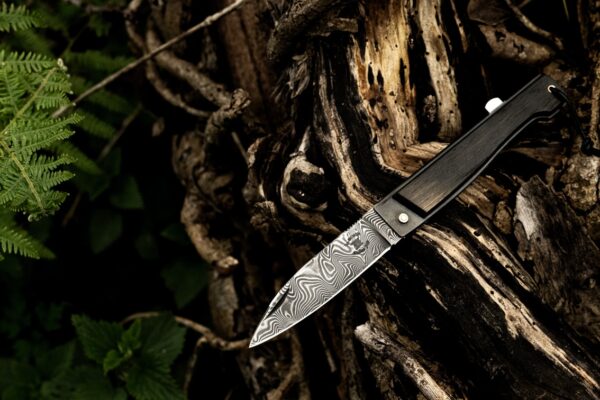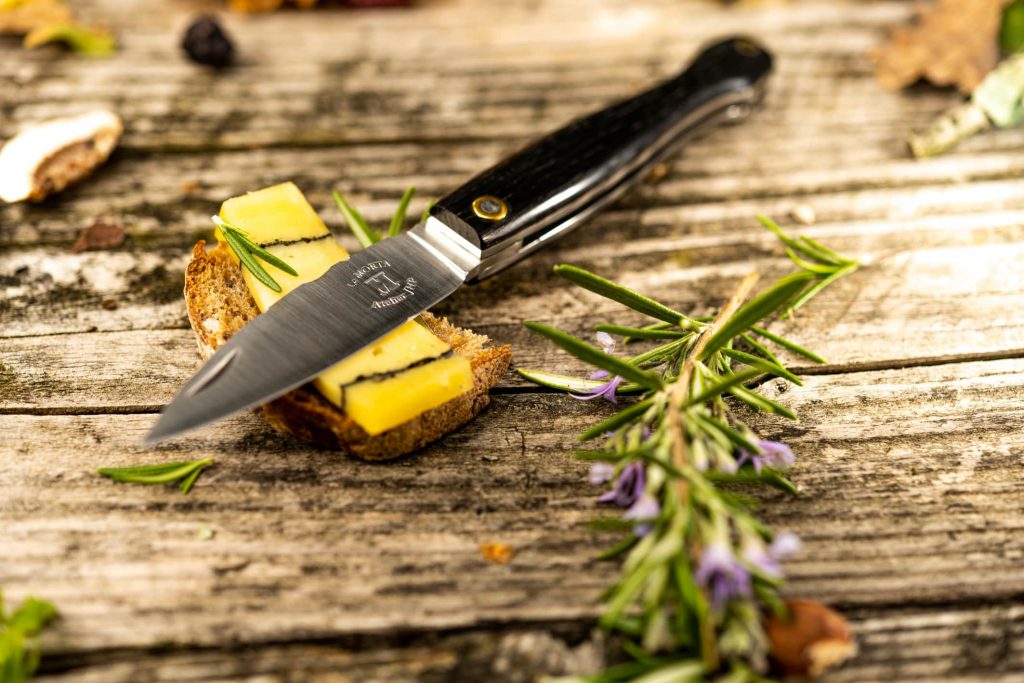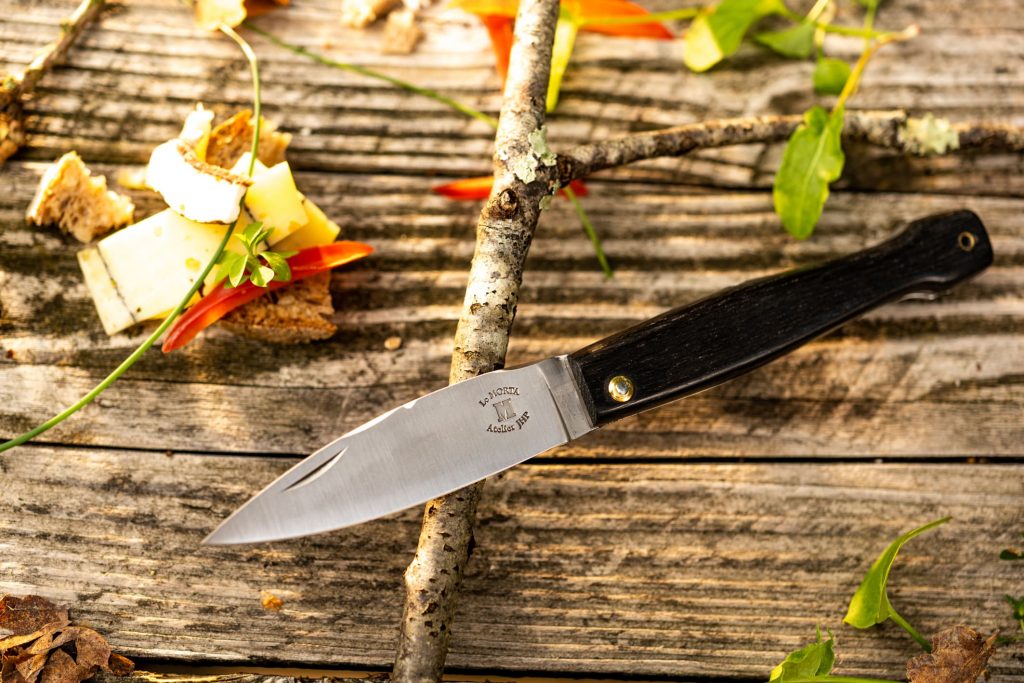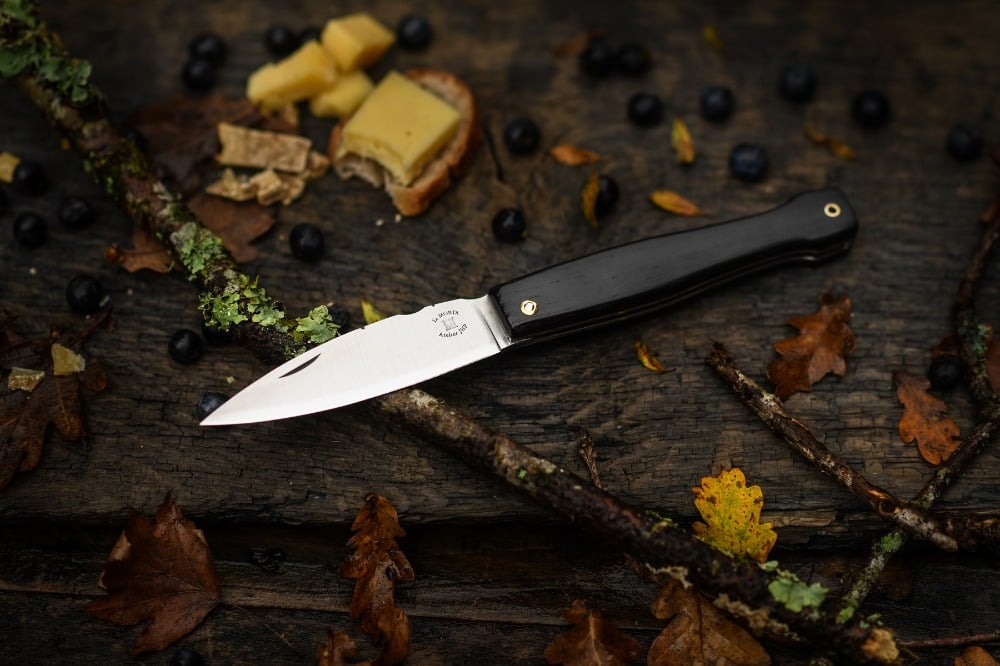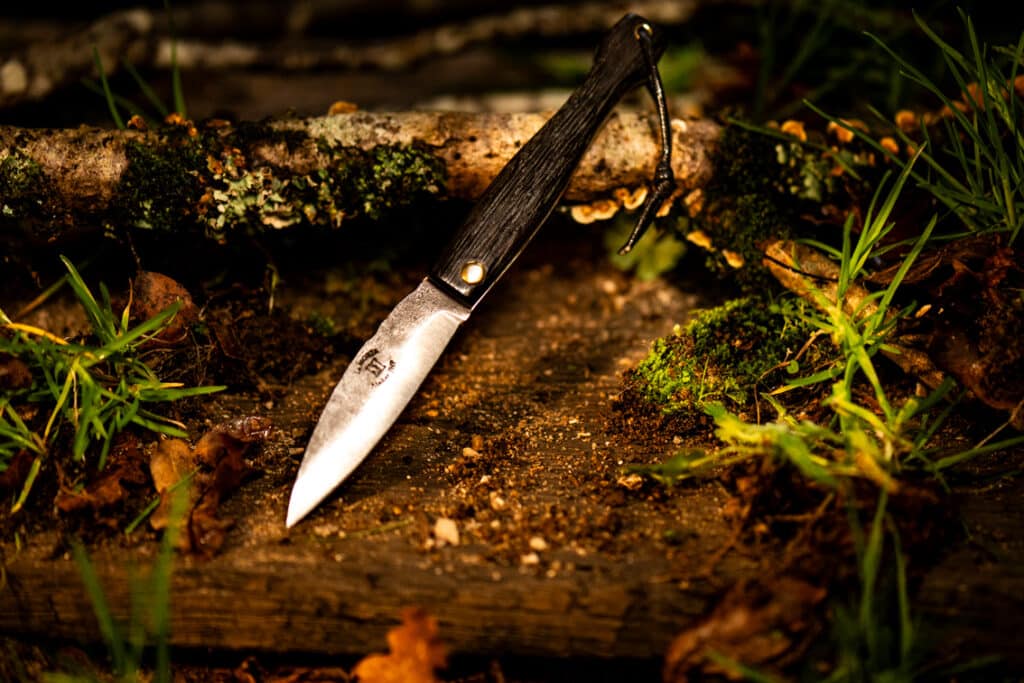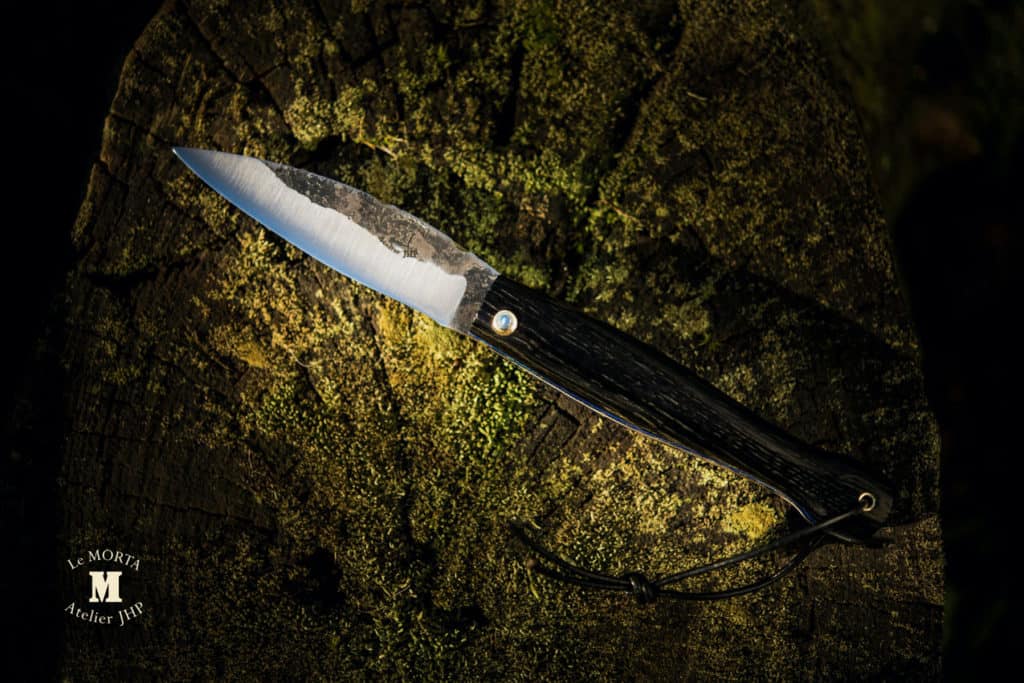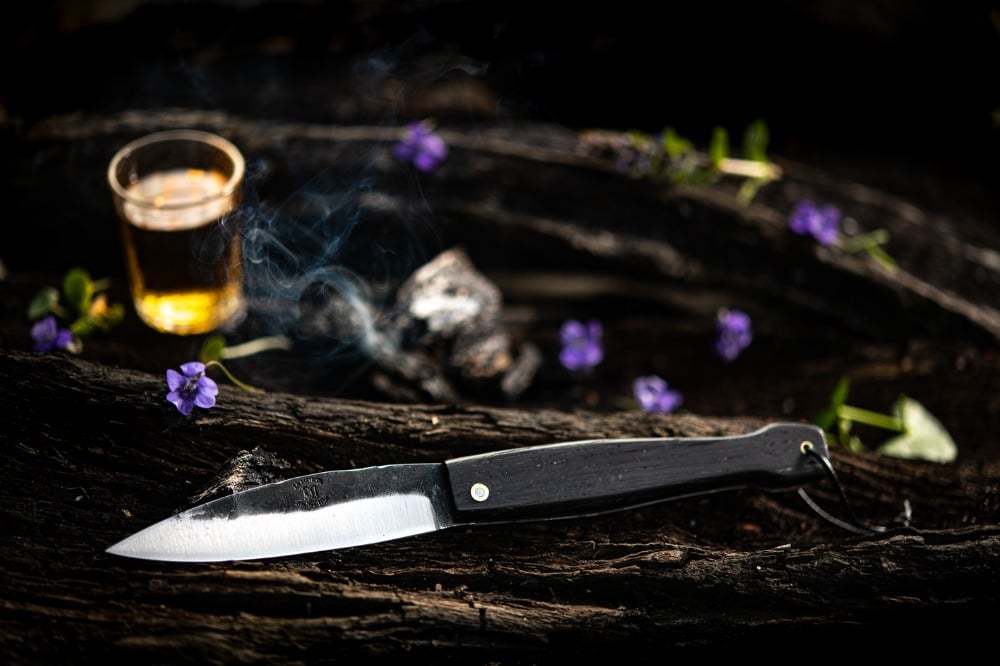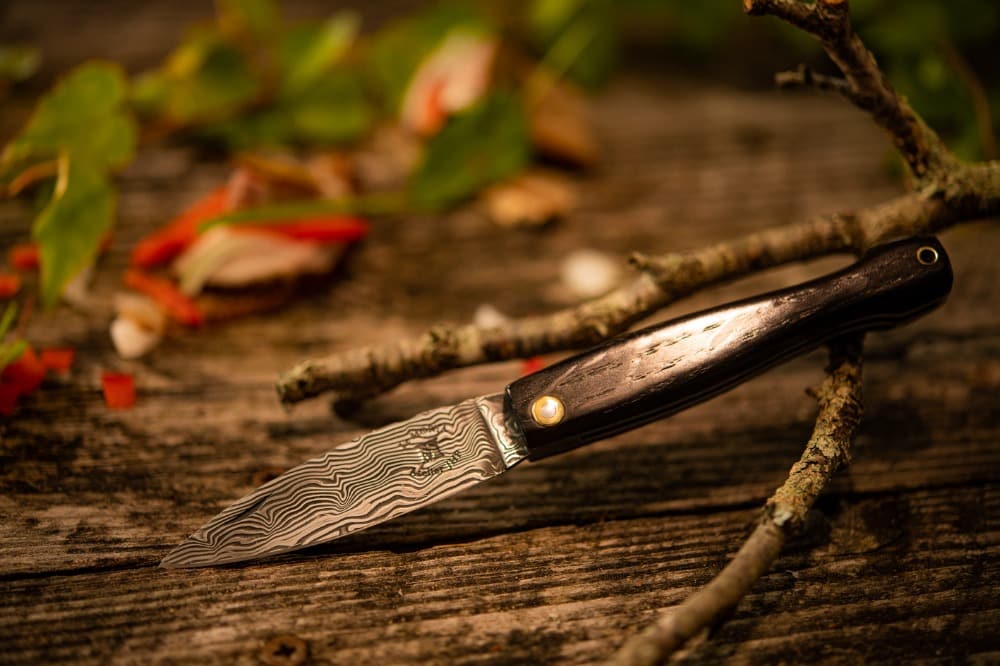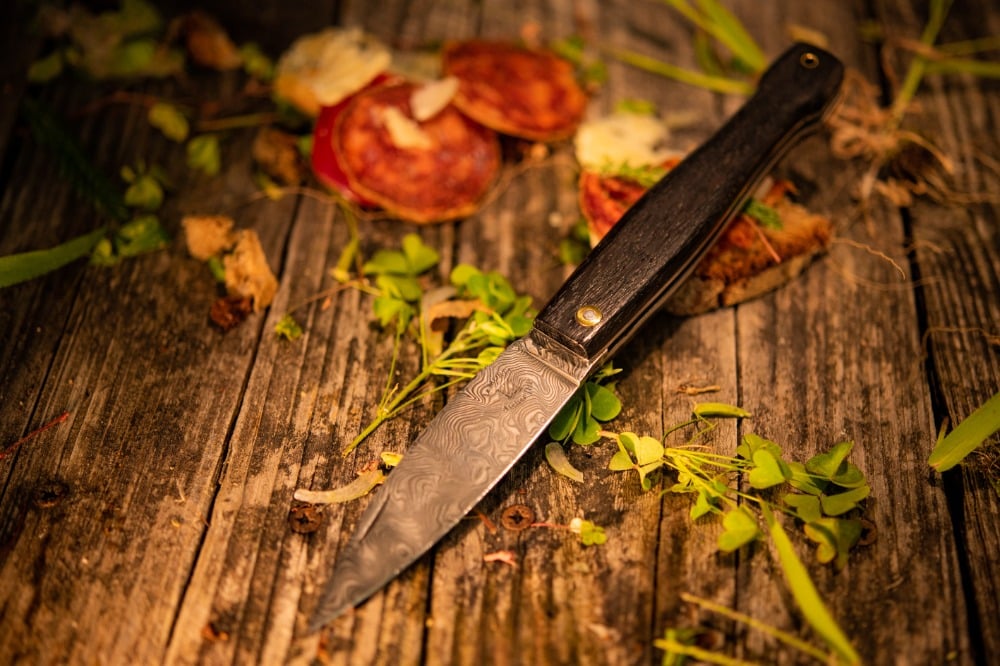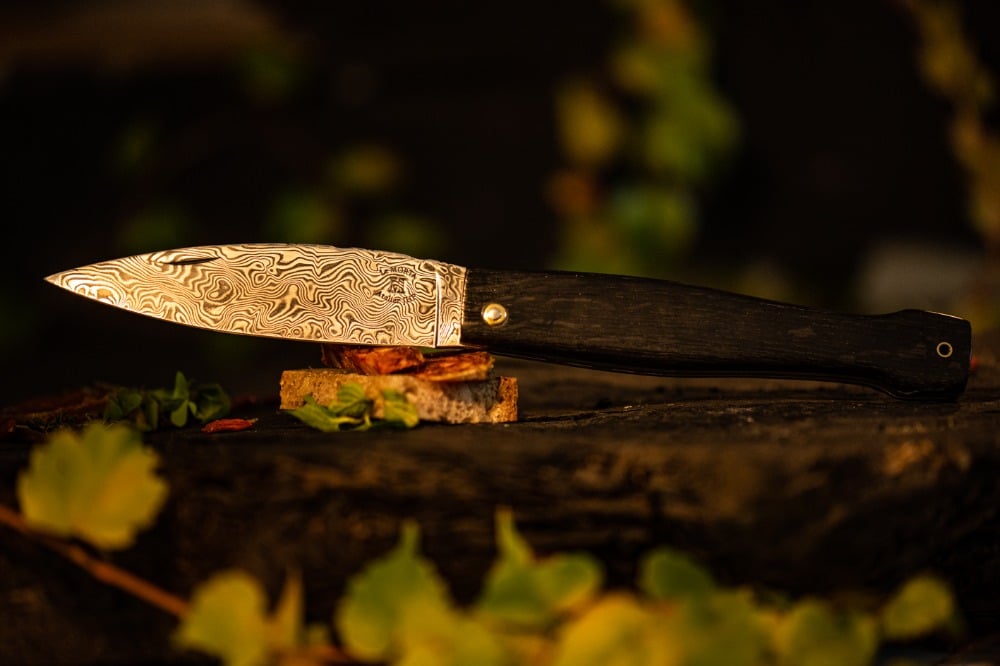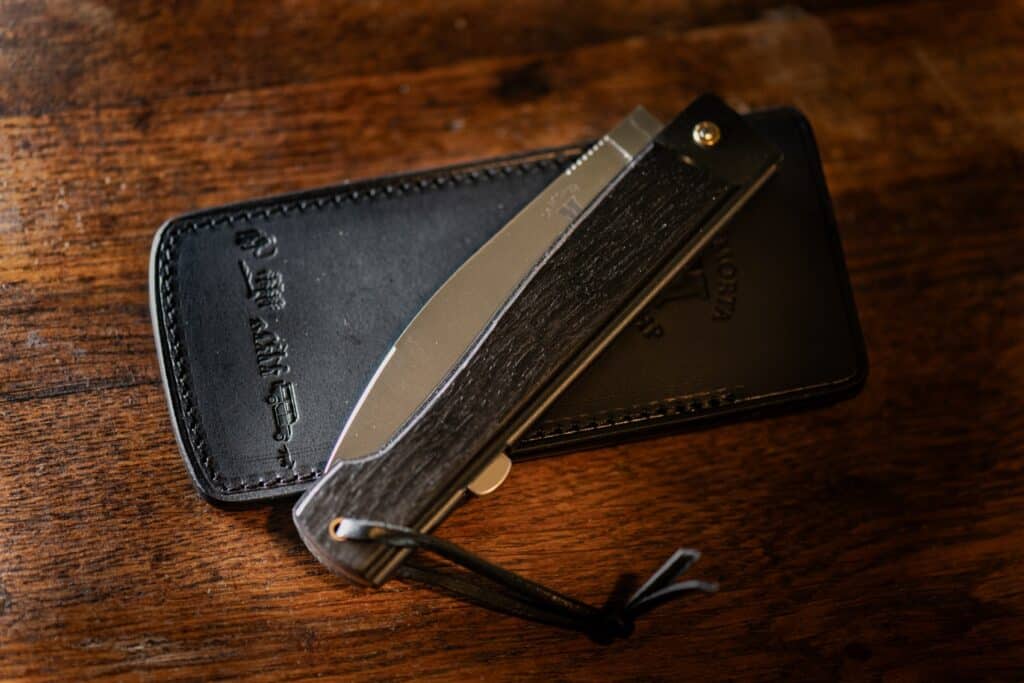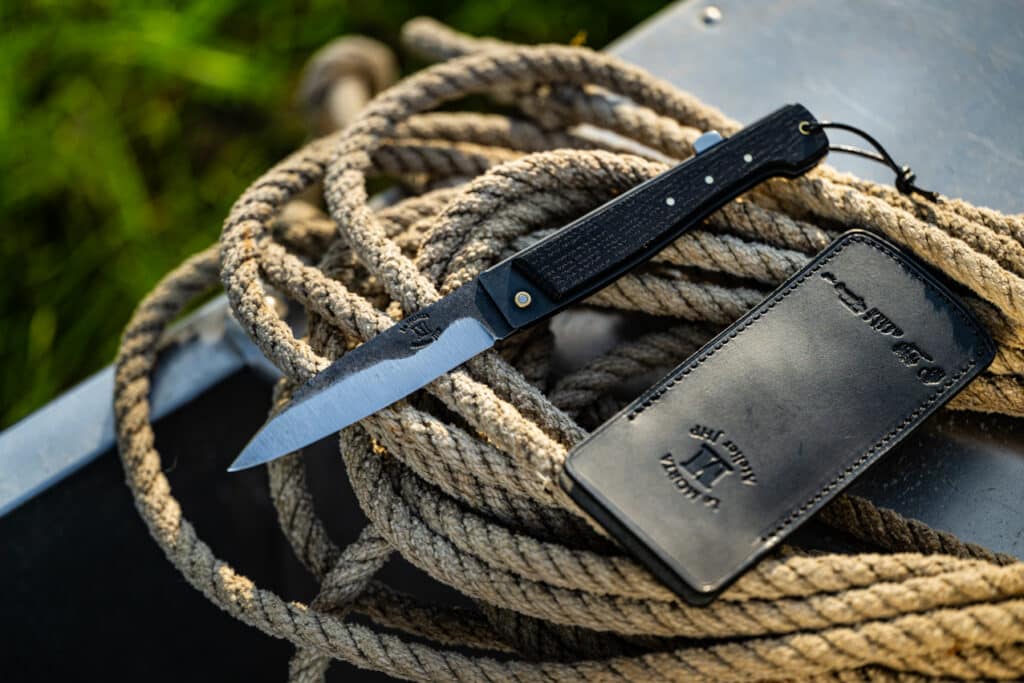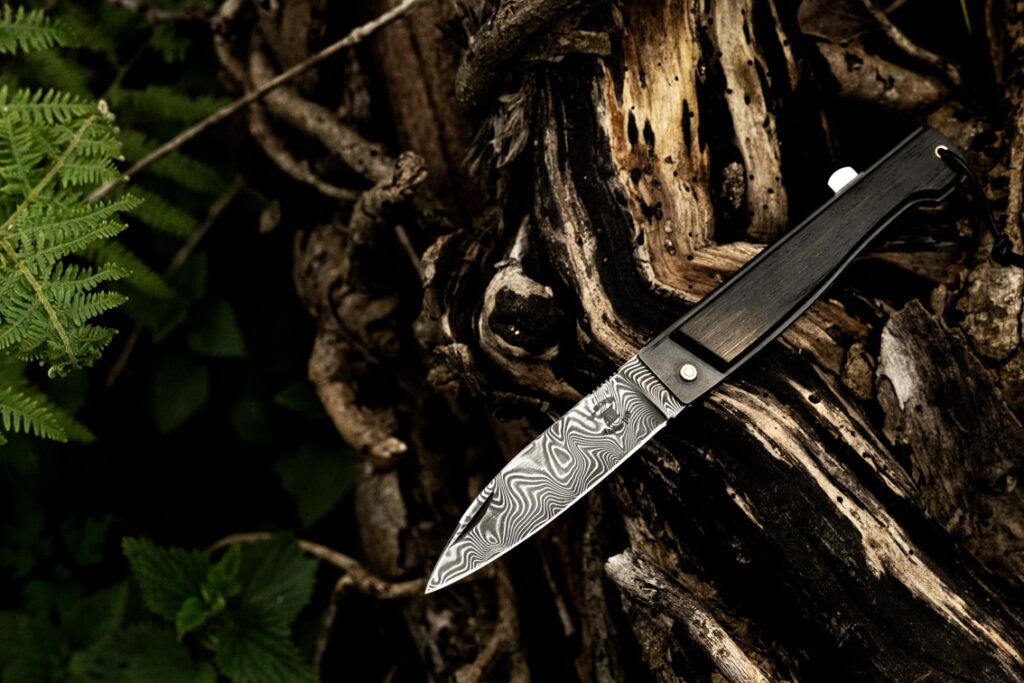The knife’s utility is, without doubt, the first criterion for choosing its blade. Peeling vegetables in the kitchen or surviving in the mountains do not require the same knife. A wide range of French pocket knives are available in France. Handle material, blade steel and opening, locking and safety systems are just some of the questions to ask before making your choice. While we’re happy to guide you through this maze of options, we’d also like to remind you that the emotion of the moment is a very good advisor. Deciding on the best folding knife: a matter for the pro or the heart, decide for yourself.
Best French pocket knife: what for?
The first question to ask yourself before choosing your pocket knife is: what do you need it for?
Are you planning :
- outdoor or indoor use ;
- daily or occasional use?
- carry it in your pocket or in a bag?
- picking, hunting, fishing, cooking, tinkering, carving, etc.?
In this way, you’ll already have a clear idea of the blade (shape and steel) and size of the knife. Beyond these technical criteria, remember to prioritize your comfort and the pleasure you’ll feel when opening it. A folding knife is such a versatile object that it can accompany you anywhere, anytime.
It’s just as well that you’re happy with it!
French brands are still the best. The decision is more a matter of taste and sensitivity to craftsmanship and history (regional knives). Choosing a handle made from a local wood species reflects your desire to contribute to the development of local heritage and short supply chains.
According to the Businesscoot study, pocket knives stand out from other knives in the consumer’s mind. In fact, use (tableware, cooking, hunting, military, etc.) is the primary criterion for categorizing cutlery.
💡 Did you know? In 2019, France counts 120 knife manufacturers and 489 artisan cutlers. Some even offer only pocket knives.*
* Source: Observatoire de la Métallurgie.
Blade: what’s the best steel for a pocket knife?
For a pocket knife, think solidity and edge quality. After all, you’ll need your pocketknife wherever and whenever you need it. Versatile or not?
90mcv8 carbon steel
Highly appreciated for its resilience, 90mcv8 (or O2) steel is an alloy that perfectly balances the flexibility and strength needed for a good blade.
With a minimum hardness of 54 HRC on the Rockwell scale and an average of 59 to 60 HRC, it can be heat-treated to 62 HRC. It combines ease of sharpening with authentic aesthetics.
Steel develops a patina as it is used.
It is particularly well suited to hunting, fishing and bushcraft knives – in short, to all outdoor activities.
Morta folding collection Brut de Forge
-

Solid Morta as forged
245,00 € This product has multiple variants. The options may be chosen on the product page -

Mini solid morta as forged
210,00 € This product has multiple variants. The options may be chosen on the product page -

XL Solid Morta as forged
325,00 € This product has multiple variants. The options may be chosen on the product page -

Morta Knife Lock Back as Forged
265,00 € This product has multiple variants. The options may be chosen on the product page
Note that on the “Rear Pump” collection, blade rotation is ensured by a 304L steel axle and two Teflon washers for greater flexibility and ease of use.
All you need to know about 90 mcv8 steel
14c28n steel
Also known by the name of its steelmaker, Sandvik, 14c28n steel is also a stainless alloy. Its composition, manufacturing process and surface treatment give it a highly resistant wire and perfect durability.
The presence of nitrogen homogenizes the structure for added strength.
Manufactured by powder metallurgy, it offers optimum strength.
Treated by austenitization, it gains in hardness (59 HRC).
As a result, a pocket knife with a 14c28n steel blade performs well against rust, wear, abrasion and humidity. It’s perfectly suited to outings in the great outdoors, even in salty environments.
Its hardness requires more sharpening than a carbon blade. To care for it, choose a natural stone.
Morta Collection folding Solid
-

XL Solid Morta
180,00 € This product has multiple variants. The options may be chosen on the product page -

Solid Morta
140,00 € This product has multiple variants. The options may be chosen on the product page -

Mini solid Morta
120,00 € This product has multiple variants. The options may be chosen on the product page -

Morta knife lock back
160,00 € This product has multiple variants. The options may be chosen on the product page
Damascus steel
Manufactured either by powder metallurgy or conventional forging, Damascus steel is distinguished by its random moiré patterns. It combines several steels (RWL34 and PMC27, for example). Stainless, it is suitable for both outdoor and kitchen use. Knifemakers take pleasure in marrying this uniquely aesthetic steel with high-quality, French-engineered wooden handles.
That’s what we do at Couteaux Morta. Damascus and Morta embellish each other. The efficiency of Damascus folding knives is matched only by their beauty.
Damascus pocket knife collection
-

Solid Morta Damascus
425,00 € This product has multiple variants. The options may be chosen on the product page -

Mini Solid Morta Damascus
340,00 € This product has multiple variants. The options may be chosen on the product page -

XL Solid Morta Damascus
525,00 € This product has multiple variants. The options may be chosen on the product page -

Morta Knife Lock Back Damas
445,00 € This product has multiple variants. The options may be chosen on the product page
Other stainless steels: titanium steel or VG-10. VG-10 comes almost exclusively from East Asia. Although Japan is the originator of this particular steel, it is not uncommon to find it in France, so appreciated is it by cutlers and lovers of fine blades.
Made In France knives: French excellence
Blade shape
For easy sharpening, a smooth blade is recommended. It enables precision cutting. The smooth edge is more versatile than its serrated counterpart.
French knife handles: which local material do you want to support?
The material, symbol of French elegance
For lovers of authenticity and craftsmanship, French brands offer handles in standard or quality range wood, even of great nobility, not to mention Morta 😉.
Organic materials such as mammoth horn or ivory are becoming increasingly rare, in view of the preservation of fossil materials. That’s why, at Couteaux Morta, we only offer ivory as an option and in the form of mini inlays.
If you’re considering a steel handle, remember to check the weight. Titanium may be light, but other steels can be heavier than wood. On the other hand, while the quality is often impeccable with industrial handles made of composite materials or derived from hydrocarbons, the feel or emotion when using them is suddenly not the same.
Like the blade, the handle represents know-how and heritage. Your knife reflects your convictions and values. Choose wisely 😉! A Made in France knife is ideal for showing your commitment to local production and reducing your carbon footprint.
Traditional French knives favor noble, natural materials, often more expensive woods. In this way, they meet the demands of knife enthusiasts*, according to the report by the Observatoire de la Métallurgie.
All our advice on caring for your wooden handle here.
Size and weight
Choose a compact, lightweight model if you want to carry it with you at all times (EDC knife: every day carry). For wider use, a medium or even large size is preferable. At Couteaux Morta, our range of folding knives comes in three sizes: mini, standard and XL.
Which is right for you?
Think about how you intend to carry it to determine the appropriate length: in your trouser pocket or in your backpack? If you’re going to carry it often, it’s best to opt for a sheath or case for greater comfort.
-

XL Solid Morta
180,00 € This product has multiple variants. The options may be chosen on the product page -

Solid Morta as forged
245,00 € This product has multiple variants. The options may be chosen on the product page -

Mini Solid Morta Damascus
340,00 € This product has multiple variants. The options may be chosen on the product page
The shape
When it comes to handle shape, you’re in charge. The size of your hand, the way it feels, the handle must fit your palm. The more you feel at one with your knife, the more you’ll enjoy using it safely.
In all cases, choose a solid, durable, comfortable and ergonomic handle.
Which locking system to choose for your folding knife?
Once again, think of the joy you’ll feel when you pull out your knife to eat or pick that mushroom that’s just waiting for you. It’s a moment that you and your knife can enjoy together!
Consider opening and closing, as well as safety. The blade must remain stable in the open position. It all depends on your dexterity and habits.
Here are a few examples of locking systems.
- Back-lock (or lock-back): the lock is located at the rear, opposite the front lock. The rod is released by pressing on the pump.
=> For fans of back-lock knives
-

Morta knife lock back
160,00 € This product has multiple variants. The options may be chosen on the product page -

Morta Knife Lock Back as Forged
265,00 € This product has multiple variants. The options may be chosen on the product page -

Morta Knife Lock Back Damas
445,00 € This product has multiple variants. The options may be chosen on the product page
- Liner lock, with its cut-out plate, the blade opens and folds with just one hand. This system is easy to use when it’s done right. Very widespread over the last thirty years, this system has also been adopted by Asian mass production and distributed in large quantities, but unfortunately, not always qualitatively.
=> For lovers of often industrial knives.
- Frame lock: the entire handle locks the blade. A cutout in the handle replaces the liner lock. Otherwise, both systems are identical.
=> For the same lovers of industrial knives.
- The ferrule (traditional French model, simple and effective) allows easy locking and unlocking.
=> For fans of inexpensive, old-school systems.
- The slip-joint: simple pressure disengages the blade, so it’s not a real locking system, but it’s traditionally the most widely used in French cutlery.
=> For those who like simplicity and efficiency.
- The friction (or two-nail) knife: a nail holds the blade in place. These are the knives most often found in artisan cutlery, as they are simpler in design.
=> For lovers of low-cost, hand-crafted knives.
- The palanquille knife: you have to lift a slat (models very present in Italy or Spain, like palm knives).
=> For those who already have a palanquille 😜.
- The flipper knife (ring or palmette) has a flat spring where the heel of the blade hooks.
=> For scuba diving enthusiasts (flipper ratio… OK we’re out…😅).
Folding knife opening systems
How do you open the blade of your folding knife? Here again, no comparison, just a list of models on the market.
- Automatic opening at the touch of a button. This is known as OTF (Out Of Front, if the blade is ejected from the front), or, erroneously, as snap-action knives.
- Assisted opening: only one hand is needed to unfold the blade.
- If the thumb stud is only present on one side, the knife can only be used by right- or left-handed people. Some models have a thumb stud on each side.
- Thumb hole: for pulling with the thumb.
- The flipper: a pin is used to open the blade.
- The nail nick for opening via a small notch. This widely-used and traditional system opens the blade using the thumbnail. And for nail biters, making a pinch between the first phalanx of the index finger and the thumb will do the trick perfectly 😉.
Choosing a French pocket knife means selecting the best wood and steel for the extreme conditions to which it will be subjected. Joking aside, deciding on the ideal folding knife is first and foremost a matter of emotions, feelings and local values. It’s not the knife that makes the hero. It’s the incredible situation you find yourself in, and the equipment you have on hand. The most important thing is to be attached to your knife, whatever it is.
In the end, the best knife is the one you love because it was given to you by someone close to you, because it has a special history, or because you simply love it.
What if the knife chose you? Why not drop into one of our stores and find out for yourself? If it’s a gift, personalize it for even more symbolism!
The Morta folding knife collection.
Article written by the sharp pen of Christelle Lorant 🪶
Our sources:
Article summary
What's the best French pocket knife for your specific needs?
Choosing the best French pocket knife depends on your intended use.
For adventurers in the great outdoors, a sturdy folding knife with a 90mcv8 carbon steel blade is a must, perfect for keeping its edge in the toughest conditions.
For everyday use, opt for 14c28n stainless steel, for impeccable corrosion resistance and minimal maintenance.
And don’t forget the handle: a noble local wood can make all the difference, combining ergonomics and aesthetics.
What makes a top-of-the-range pocket knife?
A top-of-the-range folding knife is the result of meticulous choice of materials and thoughtful design.
The knife blade, whether carbon steel or stainless steel, must promise sharpness and durability.
The handle, in rare wood or horn, is not just a support, but a promise of comfort and style.
And what about the opening mechanisms? Liner lock, frame lock, choose according to the rhythm of your daily life.Why choose a wooden handle for your pocket knife?
Choosing a wooden handle for your pocket knife is like choosing a fine wine: you need to know where it comes from.
Woods like Morta, with its unrivalled uniqueness, and more common woods like beech or olive, don’t just flatter the eye; they tell a story – the story of French forests. Morta, in particular, offers a grip that stands out not only for its local origin, but also for its unique character, which improves with age.
It’s a concrete commitment to local heritage and craftsmanship.
Which locking systems guarantee both safety and pleasure of use?
The locking system on your folding knife is not just a technical issue, it’s also a matter of the heart. Whether you opt for a back-lock for its reassuring robustness or a liner lock for its fluidity of action, each system has its own character.
Safety meets style in these ingenious mechanisms that ensure your blade remains stable in the open position or folds away elegantly.
Which steels should you choose to face the elements with your pocket knife?
When the elements rage, only top-quality steel will do. 90mcv8 carbon steel is ideal for demanding scenarios, offering great resilience.
For those who defy humidity and salt, 14c28n stainless steel is a preferred choice, guaranteeing flawless resistance and little maintenance with a wipe.
How do you personalize your knife to make it one-of-a-kind?
Personalizing your knife means giving it a soul. Engraving, choosing a handle made from precious materials – every detail counts. Imagine a handle carved from ancient wood or adorned with mammoth ivory inlays, transforming every opening of the knife into a moment of pure aesthetic pleasure.
This is your chance to create a knife that not only cuts, but also tells your story, reflecting your personal tastes and adventures.


